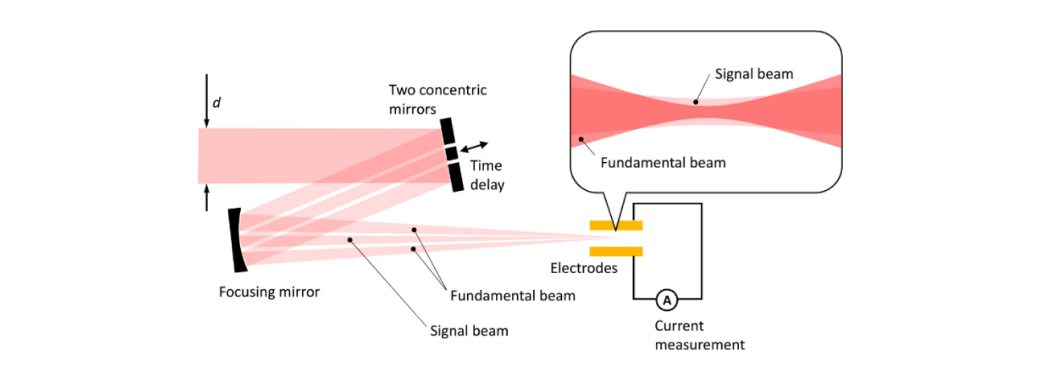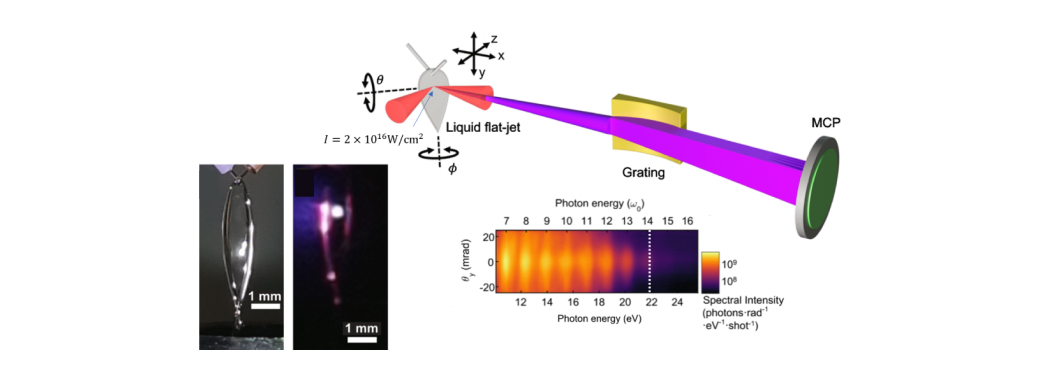Research
Extreme Science
Research objective
Physical laws that govern our daily experiences often break down under extreme natural conditions. Strong-field quantum electrodynamics (SF QED) is a specialized framework essential for describing the behavior of ultra-relativistic and ultra-small systems. Although theoretical advances in SF QED have been significant over the past several decades, experimental validation remains limited. To address this, we develop ultra-intense laser technologies, generate strong laser fields through relativistic high-harmonic generation and laser pulse compression, and investigate the interactions between ultra-relativistic electrons and ultra-intense laser fields. Our goal is to experimentally observe and control SF QED phenomena, providing critical insights to support and refine theoretical models. Through these efforts, we seek to deepen our understanding of physical processes in extreme environments.
Research topics
- Strong-field quantum electrodynamics phenomena
- Relativistic high harmonic generation and attosecond pulse generation
- Ultra-intense laser technology
Research overview
TIPTOE (Tunneling ionization with a perturbation for the time-domain observation of an electric field)
TIPTOE is a laser pulse characterization technique that directly measures the electric field of an ultrashort laser pulse in the time domain, without requiring nonlinear optics (like second-harmonic generation) or phase-matching conditions (S. B. Park et al. “Direct sampling of a light wave in air,” Optica 5, 402 (2018) – add link: https://doi.org/10.1364/OPTICA.5.000402). Instead, it uses the quantum tunneling ionization process itself as a very fast (attosecond-scale) "temporal probe." In the TIPTOE method, the incident laser beam split into two laser beams. One laser beam is used to ionize a medium (typically air). The other is relatively weak, which perturbs the ionization process. The ionization yield modulation often directly represents the temporal profile of the weak laser field. More accurate measurements require an reconstruction process [Wosic Cho et al., “Reconstruction algorithm for TIPTOE,” Sci. Reports 11, 13014 (2021), add link: https://www.nature.com/articles/s41598-021-92454-y]. It is also commercially available (https://www.sourcelab-plasma.com/laser-shaping/beam-shaping-catalog/tiptoe/).
-

Experiment setup for the TIPTOE method.
TIPTOE has several unique advantages.
- Applicable to a wide wavelength range from 200 nm to infinity (typically up to far IR)
- Applicable to a wide duration range from sub-fs to infinity (typically up to ns).
- Supports a very good dynamic range (~10^8-10)
-

TIPTOE trace measured using a 5-fs laser pulse (top) and the intensity profile (bottom)
Relativistic High Harmonic Generation
Relativistic High Harmonic Generation (HHG) refers to the production of extremely high-frequency (short-wavelength) radiation when an ultra-intense laser pulse interacts with an overdense plasma surface, and the laser intensity is so high that the electron motion becomes relativistic—that is, their velocities approach the speed of light. As a result, the reflecting plasma surface is periodically and nonlinearly modulated, leading to the generation of high harmonics. Relativistic HHG enables the production of ultra-intense attosecond pulses through a mechanism known as coherent focusing, offering a potential pathway to achieve unprecedented laser intensities.
-
Reflection of a laser field on a plasma mirror (shown with a brown color)
We recently achieved high repetition rate high harmonic radiation using a liquid flat jet. Since the liquid flat jet flows with a high speed, its surface is refreshed after the interaction with the intense laser field. It enables high repetition operation of HHG experiments.
Relativistic high harmonic generation using a liquid flat jet (Y. H. Kim et al., “HHG from a flat liquid sheet… “, Nature Communications 14 (2023), add link: https://www.nature.com/articles/s41467-023-38087-3).
Strong field QED phenomena
Nonlinear Compton Scattering
Nonlinear Compton scattering is a fundamental process in strong-field quantum electrodynamics (QED) where an electron interacts with a very intense electromagnetic field (like an ultra-intense laser pulse) and emits a high-energy photon. It’s called nonlinear because multiple laser photons are involved simultaneously in the scattering event — not just one photon as in ordinary (linear) Compton scattering.
In normal (linear) Compton scattering, an electron absorbs a single photon and emits a photon of a different (lower) energy:

In nonlinear Compton scattering, because the laser field is extremely strong, the electron can absorb multiple photons at once from the laser field in a single quantum event and emit one high-energy photon:

where n is an integer greater than 1 (meaning multiple laser photons are absorbed). The emitted photon can have much higher energy than the individual laser photons — potentially in the X-ray or even gamma-ray regime.
The nonlinear Compton scattering has been successfully demonstrated at CoReLS (M. Mirzaie et al., “All-optical nonlinear Compton scattering performed with a multi-PW laser,” Nature Photonics 18, 1212 (2024), add link: https://www.nature.com/articles/s41566-024-01550-8) using the experiment setup shown below. In this process, sub-GeV gamma photons have produced using 1.5-2.9 GeV electrons that absorbs a few hundred laser photons.
The implications of nonlinear Compton scattering are actually quite broad and important, especially in strong-field QED, high-energy astrophysics, and next-generation laser-plasma physics. Nonlinear Compton scattering is one of the first signs that quantum electrodynamics is entering the nonlinear regime — where vacuum and matter behave differently from what we observe in normal conditions. When an electron can absorb multiple photons from a laser field simultaneously, it shows that the vacuum itself is "polarized" by strong fields.
-
Feynman diagrams for strong-field QED phenomena. (a) Nonlinear Compton scattering, (b) Breit-Wheeler electron-positron pair production, (c) QED cascades.
Measuring nonlinear Compton scattering is an important step toward observing even more exotic QED phenomena, like:
- Radiation reaction (the electron losing significant energy by emitting photons),
- Nonlinear Breit–Wheeler pair production (gamma photons turning into electron–positron pairs in strong fields),
- Vacuum birefringence (the vacuum acting like a crystal under strong fields).


 Center for
Center for